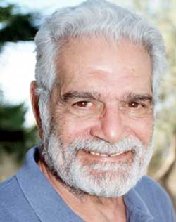Louisiana (French: Louisiane [lwizjan] ; Spanish: Luisiana [lwiˈsjana]; Louisiana Creole: Lwizyàn) is a state in the Deep South and South Central regions of the United States. It borders Texas to the west, Arkansas to the north, and Mississippi to the east. Of the 50 U.S. states, it ranks 20th in land area and the 25th in population, with roughly 4.6 million residents. Reflecting its French heritage, Louisiana is the only U.S. state with political subdivisions termed parishes, which are equivalent to counties, making it one of only two U.S. states not subdivided into counties (the other being Alaska and its boroughs). Baton Rouge is the state's capital, and New Orleans, a French Louisiana region, is its largest city with a population of about 383,000 people. Louisiana has a coastline with the Gulf of Mexico to the south; a large part of its eastern boundary is demarcated by the Mississippi River.
Much of Louisiana's lands were formed from sediment washed down the Mississippi River, leaving enormous deltas and vast areas of coastal marsh and swamp. These contain a rich southern biota, including birds such as ibises and egrets, many species of tree frogs—such as the state recognized American green tree frog—and fish such as sturgeon and paddlefish. More elevated areas, particularly in the north, contain a wide variety of ecosystems such as tallgrass prairie, longleaf pine forest and wet savannas; these support an exceptionally large number of plant species, including many species of terrestrial orchids and carnivorous plants. Over half the state is forested.
Louisiana is situated at the confluence of the Mississippi river system and the Gulf of Mexico. Its location and biodiversity attracted various indigenous groups thousands of years before Europeans arrived in the 17th century. Louisiana has eighteen Native American tribes—the most of any southern state—of which four are federally recognized and ten are state recognized. The French claimed the territory in 1682, and it became the political, commercial, and population center of the larger colony of New France. After a brief period of Spanish rule, Louisiana was returned to France in 1801 before being purchased by the U.S. in 1803; it was admitted to the Union in 1812 as the 18th state.
Following statehood, Louisiana saw an influx of settlers from the eastern U.S. as well as immigrants from the West Indies, Germany, and Ireland. It experienced an agricultural boom, particularly in cotton and sugarcane, which were cultivated primarily by slaves imported from Africa. As a slave state, Louisiana was one of the original seven members of the Confederate States of America during the American Civil War.
Louisiana's unique French heritage is reflected in its toponyms, dialects, customs, demographics, and legal system. Relative to the rest of the southern U.S., Louisiana is multilingual and multicultural, reflecting an admixture of Louisiana French (Cajun, Creole), Spanish, French Canadian, Acadian, Haitian, Native American, and West African cultures (generally the descendants of slaves imported in the 18th century); more recent migrants include Filipinos and Vietnamese. In the post–Civil War environment, Anglo-Americans increased the pressure for Anglicization, and in 1921, English was shortly made the sole language of instruction in Louisiana schools before a policy of multilingualism was revived in 1974. Louisiana has never had an official language, and the state constitution enumerates "the right of the people to preserve, foster, and promote their respective historic, linguistic, and cultural origins."
Based on national averages, Louisiana frequently ranks low among U.S. states in terms of health, education, and development, with high rates of poverty and homicide. In 2018, Louisiana was ranked as the least healthy state in the country, with high levels of drug-related deaths. It also has had the highest homicide rate in the United States since at least the 1990s.
Etymology
Louisiana was named after Louis XIV, King of France from 1643 to 1715. When René-Robert Cavelier, Sieur de La Salle claimed the territory drained by the Mississippi River for France, he named it La Louisiane. The suffix –ana (or –ane) is a Latin suffix that can refer to "information relating to a particular individual, subject, or place." Thus, roughly, Louis + ana carries the idea of "related to Louis." Once part of the French colonial empire, the Louisiana Territory stretched from present-day Mobile Bay to just north of the present-day Canada–United States border, including a small part of what are now the Canadian provinces of Alberta and Saskatchewan.
Statehood
Louisiana became the eighteenth U.S. state on April 30, 1812; the Territory of Orleans became the State of Louisiana and the Louisiana Territory was simultaneously renamed the Missouri Territory.
At its creation, the state of Louisiana did not include the area north and east of the Mississippi River known as the Florida Parishes. On April 14, 1812, Congress had authorized Louisiana to expand its borders to include the Florida Parishes, but the border change required approval of the state legislature, which it did not give until August 4. For the roughly three months in between, the northern border of eastern Louisiana was the course of Bayou Manchac and the middle of Lake Maurepas and Lake Pontchartrain.
From 1824 to 1861, Louisiana moved from a political system based on personality and ethnicity to a distinct two-party system, with Democrats competing first against Whigs, then Know Nothings, and finally only other Democrats.
Here are three photos of New Orleans....
If you want to read a whole lot more, go here: https://en.wikipedia.org/wiki/Louisiana
- SERVES
- 6
- COOK TIME
- 50 Min
Did you know that June is Dairy Month? Well it is. These days, what started out as a salute to our hard-working dairy farmers has grown way beyond that. Today our dairy cases are brimming with everything from an assortment of dairy favorites to juices, milk alternatives, refrigerated potatoes, and so much more. And to celebrate, wait until you try this creamy quiche.
- 1 refrigerated rolled pie crust (from a 14.1-ounce package)
- 5 eggs
- 3/4 cup whole-milk ricotta cheese
- 3/4 cup heavy cream
- 1/2 teaspoon Italian seasoning
- 1/2 teaspoon salt
- 1/4 teaspoon black pepper
- 2 cups shredded Italian cheese blend
- 1/4 cup chopped sun dried tomatoes
- Preheat the oven to 450º. Unroll pie crust and place in a 10-inch quiche pan or 9-inch deep dish pie plate. Flute edges and prick bottom and sides of dough randomly with fork. Bake 8 minutes then remove from oven; set aside. Reduce heat to 375 degrees F.
- In a medium bowl, whisk eggs, ricotta cheese, heavy cream, Italian seasoning, salt, and pepper. Stir in Italian cheese blend and sun dried tomatoes. Pour mixture into crust.
- Bake 40 to 45 minutes or until center of quiche is set. Let sit 10 minutes before cutting into wedges and serving.


1952 – Steven Seagal, American actor and martial artist






















1 comment:
Thank you for the shout out for my John's birthday. I chose well 61 years ago when I married this man. :)
XOXO Trisha
Post a Comment